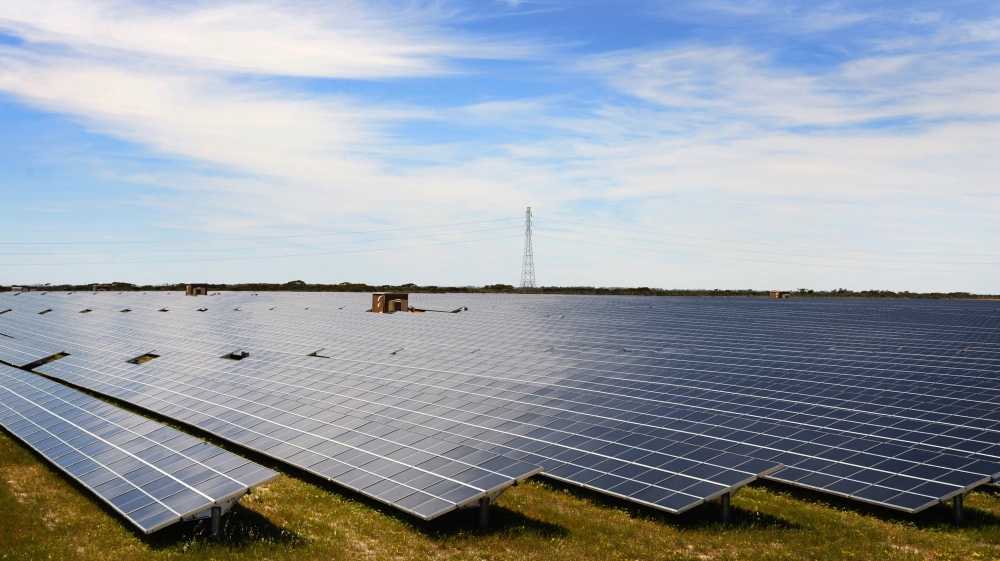Melbourne, Australia
Reuters
Australia has met its 2020 target for generating electricity from large-scale renewable energy a year ahead of plan, the country’s clean energy regulator said on Wednesday, even as wind and solar investment has slowed.
The renewable energy target was achieved despite more than a decade of climate policy uncertainty in Australia which has led to soaring power prices and unreliable supply.

Rows of solar panels face skywards at the Greenough River Solar project near the town of Walkaway, about 350 kilometres north of Perth, on 10th October, 2012. PICTURE: Reuters/Rebekah Kebede
The target, launched in 2001 by a conservative government and reduced in 2015 with rare bipartisan support, was for Australia to generate 33,000 gigawatt hours of power from large-scale renewable energy by 2020. Australia’s total power generation is currently around 260,000 GWh.
The Clean Energy Regulator, which estimated in 2016 that to meet the target 6,400 MW of large-scale capacity would need to be built between 2017 and 2019, said on Wednesday that milestone was met on 30th August.
A further 4,851 MW of capacity has been committed and another 1,556 MW was likely to go ahead, it said.
“While future investment faces a number of constraints, this is by no means the end of renewable energy investment in Australia, with markets continuing to innovate and adapt to opportunities and challenges,” Clean Energy Regulator Chairman David Parker said in a statement.
Developers have faced issues with Australia’s strained grid and extra scrutiny from network operators to ensure new projects don’t add to existing problems.
Reaching the target means the end of a government scheme that provided subsidies to wind, solar and hydro power projects.
The clean energy industry said $A24 billion had been invested in renewable energy in the last 18 months alone, while wind and solar have gone from the most expensive form of power in 2001 to the lowest cost.
The main challenge was for the government to set out a clear policy for the energy sector to enable new investments, Clean Energy Council Chief Executive Kane Thornton said.
“The industry doesn’t need new subsidies. We just need certainty,” Thornton said in a statement.





